[ad_1]
Liverpool’s £12.5 million deal to sign Federico Chiesa came out of the blue for fans, but the new No. 14 could be a throwback to the club’s most successful buys of the modern era.
Opportunistic; that was the buzzword for Liverpool this summer. That was the club’s approach in the transfer market following massive behind the scenes changes on Merseyside.
Jurgen Klopp announced he would be leaving way back in January but Arne Slot wasn’t announced as his successor until May.
The Dutch tactician and the German coach share some similarities but there are also some key differences in their approach. This, no doubt, complicated the club’s summer transfer plans.
Shortlists would’ve been changed following the appointment of the former Feyenoord boss with his style of play needing certain traits and characteristics that differ from his predecessor.


Couple this with the wholesale changes behind the scenes, including the arrival of a new sporting director in Richard Hughes, and it is easy to understand exactly why the Reds seemingly let the market dictate what they did and didn’t do.
It was very much a case of let’s see what we can do rather than here’s a long-term plan, let’s build towards that.
That is perhaps why it was Martin Zubimendi or bust this time around.
His release clause presented the club with an opportunity to bring in a player of his quality for a reasonable fee. He represented real value in what is a difficult market to navigate.
Leny Yoro was another opportunistic target. It is rare to find someone with his profile on the market for that sort of money.
Initially, he was reported to be available for around the £40 million mark. He ended up leaving Lille for £52 million (plus £8 million in add-ons) with Man United needing to throw money at him in a bid to convince him that Old Trafford was the best place for his development.


Liverpool wanted to react to the market. And this approach paid off towards the end of the window when they were able to sign Federico Chiesa for an initial £10 million.
The deal to bring him to Anfield was opportunistic. The Reds waited until the final few days of the transfer window to make their move. They knew Juventus wanted rid of him and they would accept a bargain fee in order to recoup some money on the Italy international.
Some believe the lines between an opportunistic signing and a panic buy are blurred. Some felt Chiesa fell into the latter category with Liverpool being fairly stacked in attack and the versatile forward being labelled as injury-prone. It was a signing that didn’t make sense.
But the closer you look at this deal, the more it looks like a genius transfer.
The perfect profile


When Michael Edwards was here first time around, Liverpool had a particular profile for their attackers. Diogo Jota, Sadio Mane and Mohamed Salah all shared similar underlying numbers prior to their moves to Anfield.
The trio had scalable output.
For starters, their goal threat was sustainable. They weren’t heavily reliant on volume for their chances but, at the same time, they were used to having a fair number of efforts (three per 90 to be exact).
Their expected goals per 90 average varied between 0.32 and 0.39. This highlighted the fact they weren’t taking low-value efforts.
With that trio, it was a case of just getting them closer to goal which, in theory, was to be expected in a more dominant team like Liverpool. That is exactly what happened.
The Reds moved away from this with the signings of Luis Diaz, Darwin Nunez and Cody Gakpo. That trio were all having a hot streak in front of goal with their former clubs and it was going to be difficult to replicate those numbers without tweaks to the team.
All three have had some success at Anfield but it hasn’t been as seamless as it was for Jota, Salah and Mane, has it?
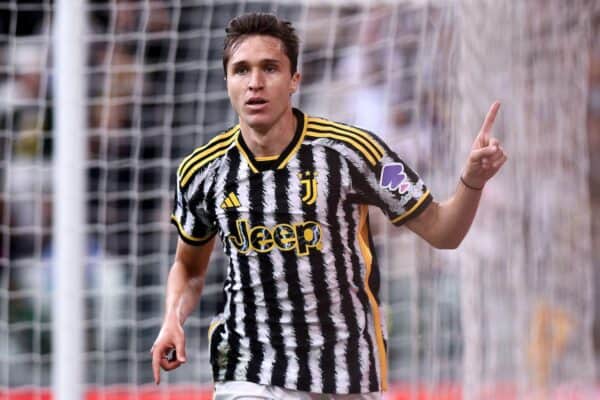

Chiesa very much profiles like an Edwards attacker. He’s no longer involved in that with the club but Hughes, a man handpicked by the former sporting director, will likely have a similar model for this sort of thing.
In the two seasons he racked up over 2,000 Serie A minutes for Juventus, Chiesa finished with an xG per 90 average of 0.32 and he did so having taken just 2.7 shots per 90.
These are encouraging averages, especially when you consider this is over a sample size of 4,500 minutes in a top-five European league.
They’re even better when you consider he’s been turning out for an erratic Juve team and last season was the first real campaign back playing regularly following his ACL injury. The signs are positive.
He’s developed as a player following his move to Turin, too.


During his initial four seasons with Fiorentina, almost 50 percent of Chiesa’s shots arrived from outside of the penalty area. He was a high-volume shot merchant but he wasn’t the most intelligent with his efforts.
During his four seasons in Turin, though, this figure dropped to 34 percent.
Despite the change in where he was taking his shots from, he was still quite varied with his efforts. In Florence, he averaged 33 percent of his efforts with his weaker left foot. With Juventus, this figure is 30 percent.
There’s a touch of Jota about his finishing. He strikes the ball early and he’s confident on either foot which adds an unpredictability to his game. It also gives Slot a number of options.
More than just a Salah alternative
Chiesa spent a lot of his early career in Florence on the right side.
He’s a bit of a throwback winger when deployed on that side of the pitch. He’ll hit the byline. He’ll look to take on an opponent on the outside. He’ll look to stretch the play.
And that is because, unlike many of the wide forwards in the current game, the former Fiorentina man is as much of a creator as he is a goal threat.
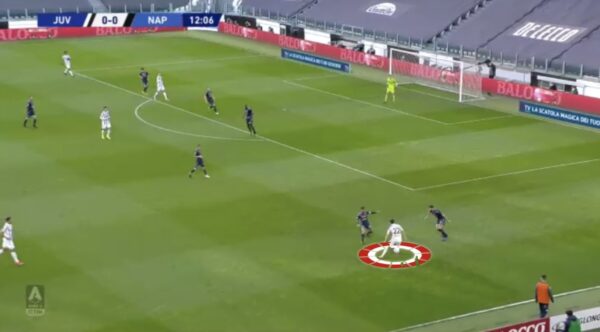

On the right for Juventus, you see Chiesa look to attack two Napoli players during this phase of play. He could play backwards but sees there’s space to attack, so he goes through the gears to slalom his way past those looking to close him down.


Having escaped, he attacks the space inside the penalty area before playing a pass across the goal.
That is what he’s capable of as a right winger.
This versatility could prove to be invaluable to Liverpool.
He could be viewed as the Salah relief. Someone to replace the legendary Egyptian for the final 20 minutes while standing in for him during cup games. His arrival could help prolong Salah’s career with the Reds.
Having spent a lot of his time with Juventus on the left, he is also an able deputy for Diaz. They too share similarities in the sense Chiesa is an explosive ball-carrier, he can beat opponents and he’s comfortable drifting into central areas from the left-hand side.


In the screenshot above Chiesa, playing for Italy, has dropped back to pick up possession inside his own half. He drives into a central area with the ball and this opens up multiple scenarios for the quick forward.
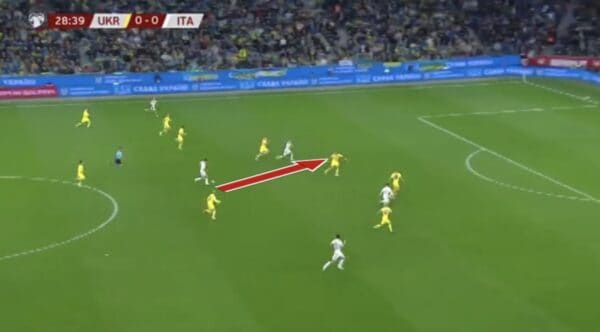

In the end, he threads a pass through, highlighted by the red arrow in the screenshot, and Italy have a one-on-one opportunity with the goalkeeper. The effort is saved but it all comes about because of Chiesa.
He had options too. He could’ve played the ball to the man on his right who also would’ve had a run into the penalty area. He could’ve continued carrying the ball before getting a shot off.
Diaz is often criticised for his final ball whereas Chiesa, while not always perfect, seems to be able to pick out a pass. His ability to play with his weaker foot helps him as a dual threat.
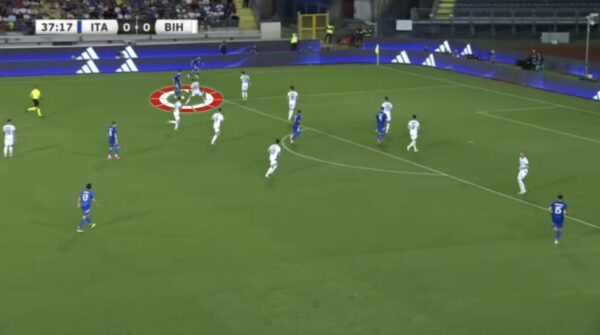

In this instance, he slows the play down. The opposition are well positioned. They have cover if he tries to attack the outside space and they have bodies in central areas if he looks to cut inside.
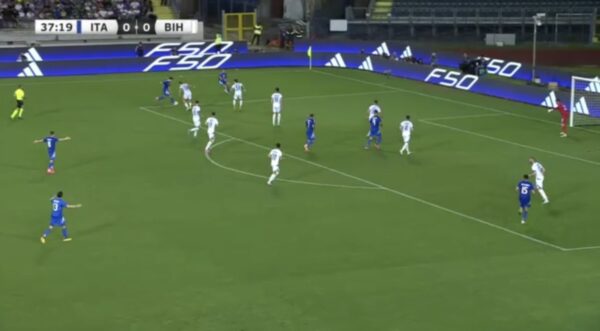

Chiesa shifts his weight so that he’s able to chip a left-footed cross into the box and Italy take the lead. The opposition aren’t expecting it and simply cannot react.
Who might benefit from this sort of play? The Liverpool attacker who plays on the shoulder of the last man at all times, Nunez.
It will also suit the box-crashing Dominik Szoboszlai.
A solution to many problems
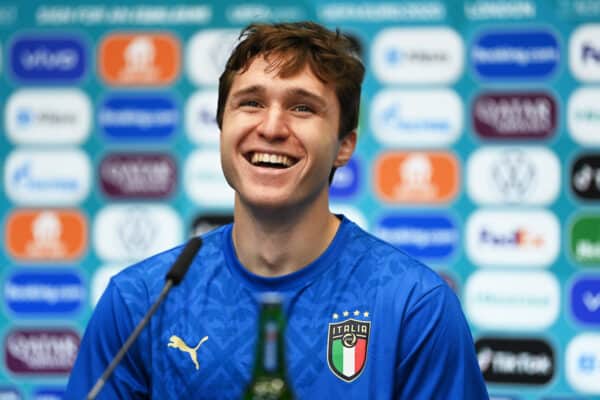

So Chiesa is an option for the right, but also the left, though Liverpool have Diaz, Gakpo, Jota and even Nunez who can play there.
He’s also an option as a centre-forward, especially if Liverpool are after someone to do a similar job to their No. 20.
The 26-year-old would need to work on how he is with his back to goal but he has the work rate, creativity and the goal threat to carry out Jota’s role as the centre-forward.
He’s a strong finisher who can pick a pass. His defensive work goes under the radar and he’s got a knack for being able to get his body into the right place to knick the ball and cause a turnover.
All of this is, of course, theoretical right now, but the potential is there for Chiesa to not only be one of the signings of the summer but also one of the best signings in the club’s history.
[ad_2]











